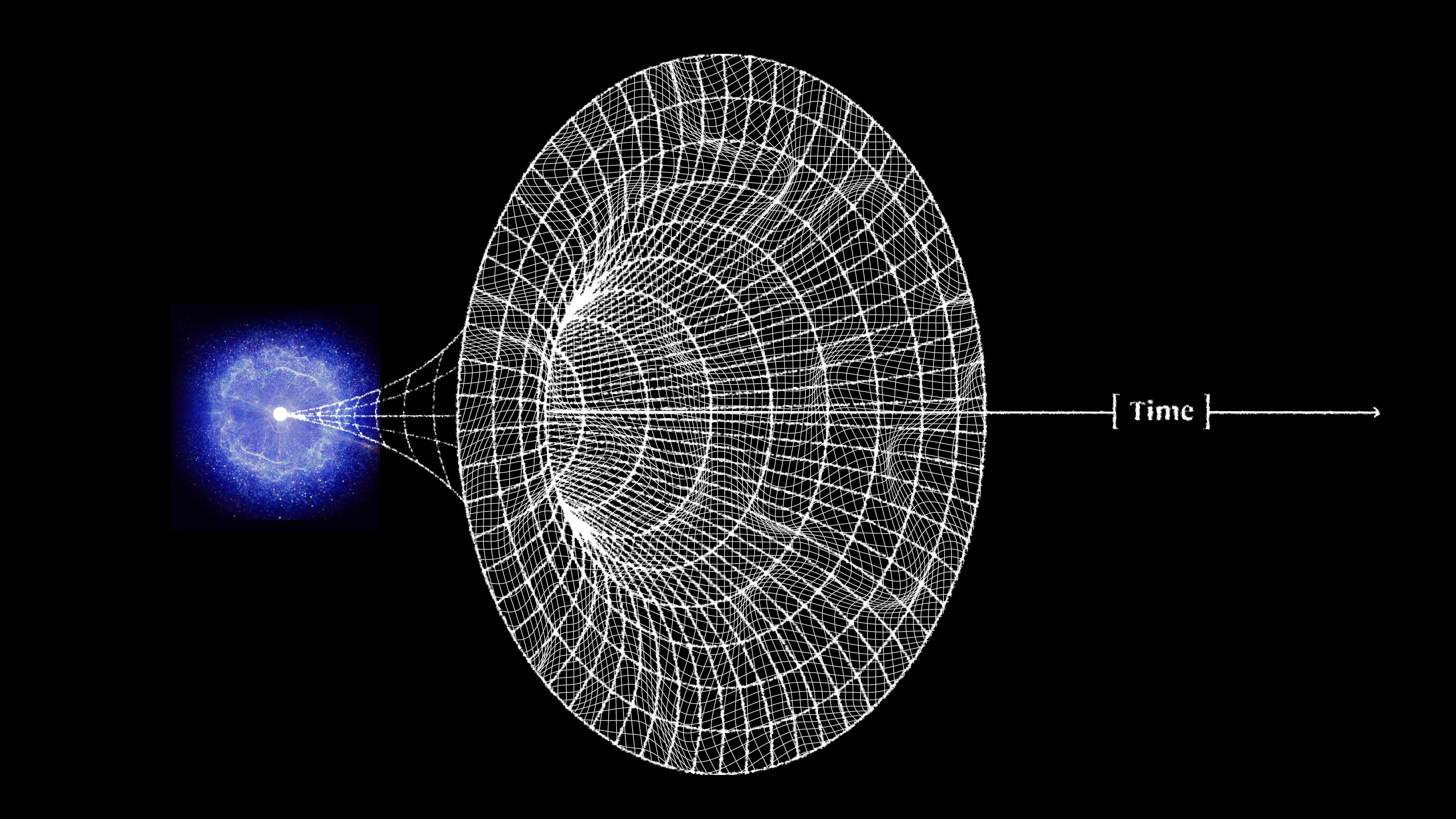How traveling back in time is permitted by Einstein’s physics
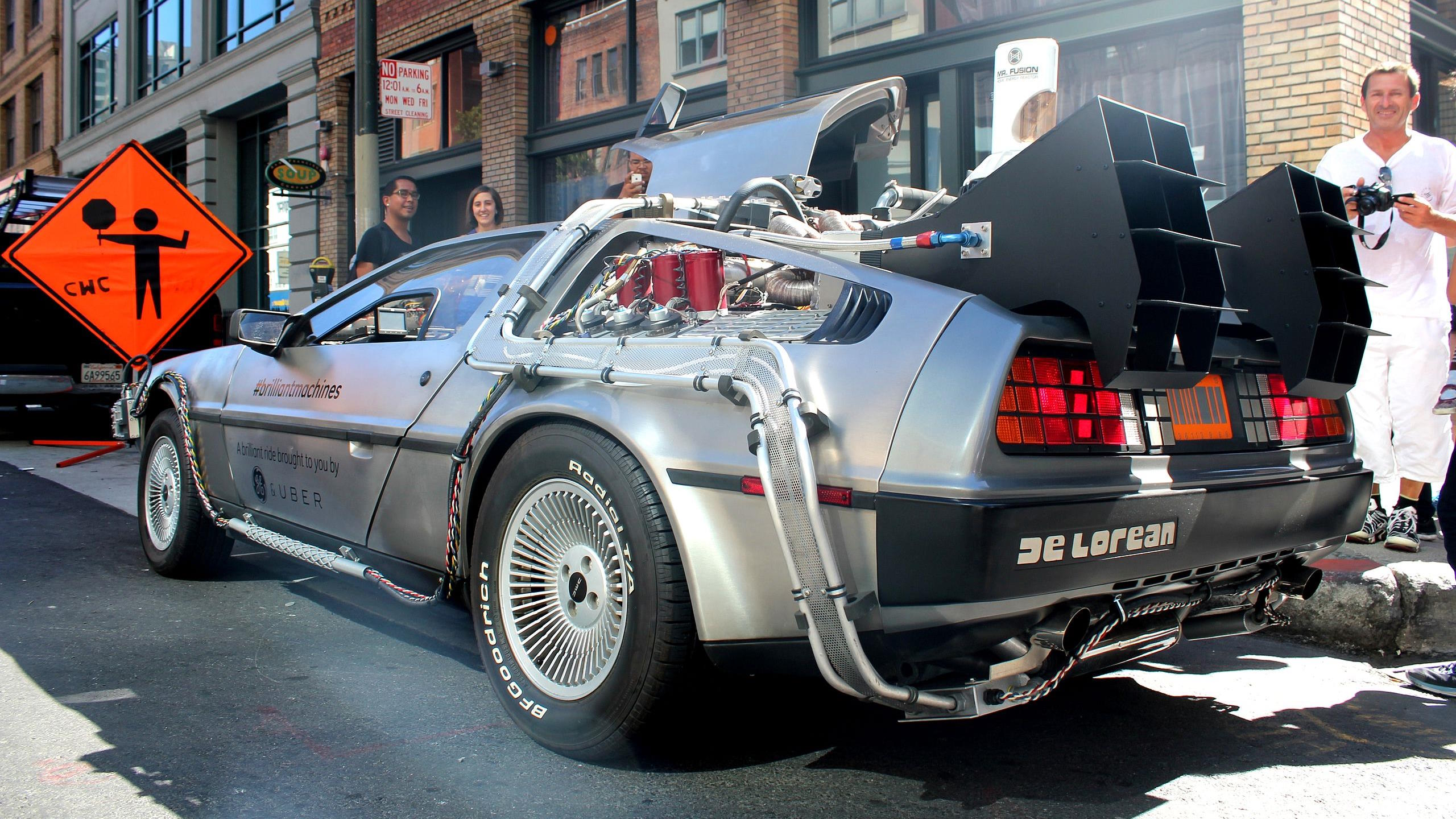
- From Back to the Future to Harry Potter to Groundhog Day, time travel has been a part of our science-fiction imaginings for as long as we’ve been telling stories.
- While the idea of going back in time to “right past wrongs” is a strong philosophical temptation, there are important physical roots in Einstein’s general relativity that dictate this as a real physical possibility.
- Although an enormous amount of energy is required and certain ideas (like traveling back in time to kill your own grandfather before your parents were conceived) are forbidden, time travel cannot be ruled out.
When you think about the idea of time travel, you likely think about the fantastic possibility of going backward in time to an event in the past, rather than our constant, inevitable march forward in time. After all, traveling back in time remains one of the greatest tropes in movies, literature, and television shows: the idea that we could do so in a fashion that lets us alter the past, correcting “mistakes” that were made by ourselves or by others. From the time turner in Harry Potter to a Delorean at 88 miles-per-hour in Back To The Future to the countless time loops experienced by the protagonist in Groundhog Day, traveling back in time provides us with the possibility of righting wrongs that have already occurred in the past.
To most people, it’s an idea that’s relegated to the realm of fiction, as every law of physics indicates that the only way we’re allowed to move through time is forward. Philosophically, there’s also a famous paradox that seems to indicate the absurdity of anyone being able to travel arbitrary amounts of time backward: the Grandfather Paradox. Put simply, if traveling backward through time were possible, you’d be able to go back and kill your grandfather before your parents were ever conceived, rendering your own existence impossible. For a long time, backward time travel seemed to be forbidden. But thanks to some very interesting properties of space and time in Einstein’s general relativity, traveling back in time is now known to be physically possible after all.

According to Einstein, space and time are not separate, absolute entities, but rather are woven together in an inseparable fabric: spacetime. There’s a quantity that’s known to be invariant — the spacetime interval (sometimes called the Einstein interval) — that represents your combined motion through space and time together. Put simply: if you’re at rest, and your spatial position doesn’t change, then you’re moving through time at the maximum allowable rate: forward, at a rate of one second-per-second. However, if you’re in motion, and your spatial position does change with time, then you move through time at a slower rate, as objects in relative motion experience the phenomenon of time dilation.
The faster you move through space, the slower you move through time, up to the absolute limit of how fast it’s possible to travel: the speed of light. As you approach that ultimate limit, your motion through space gets faster and faster, while your motion through time gets slower and slower. If you could actually reach the speed of light, which is a physical impossibility unless you’re a massless entity, you’d find that time appeared to stop for you, and wouldn’t pass at all during your journey. In theory, if you could move faster than the speed of light, you’d become a tachyon, and would indeed experience time running backward; however, this possibility is an unphysical situation, as tachyons do not correspond to anything that exists in physical reality.

However, going faster than the speed of light — which is arguably how Superman travels back in time in the original Superman movie — isn’t the only way to travel backward in time, according to Einstein. While the motion of any real entities through the fabric of spacetime is limited by the speed of light in a vacuum, spacetime itself is not required to be flat and unchanging: like a three-dimensional Cartesian grid. Instead, according to Einstein’s general relativity, it’s possible that space can evolve, and as part of that evolution, it can be curved, can expand or contract, or could even create and maintain a connection between two disparate points within it.
That last possibility was formulated way back in the 1930s by Einstein and his then-student, Nathan Rosen, and was originally known as an Einstein-Rosen bridge. This is traditionally visualized by reducing the number of dimensions from three to two, and treating spacetime as a two-dimensional sheet. You can imagine, just as you can imagine folding a flat sheet of paper atop itself, that two points that are well-separated by following the sheet itself can be connected in some higher-dimension (in this case, the third dimension) that’s normally inaccessible to someone confined to the two-dimensional sheet. This property of spacetime, a fascinating theoretical possibility, is arguably the most important concept when it comes to the science of time travel.

The more common name for this physical idea is simply to call it a wormhole. Many have often wondered what happens when you fall into a black hole: a region of space that has so much matter-and-energy within it, that
- any light emitted from that region,
- as well as any matter or radiation that falls into that region,
can never escape, no matter how much energy it has or how fast it’s moving. Even at the speed of light, nothing can escape from within the event horizon of a black hole. Normally, we assume that these black holes lead only to a central singularity, and that as you approach it, your destruction is inevitable.
But there’s another possibility: that black holes, if you enter them, actually connect to another region of spacetime. If, instead of a positive energy density (like standard black holes possess), that connected region has a negative energy density, it would become a white hole, meaning that you could enter the “black hole” end and emerge on the other side, through the “white hole” end, journeying through a “hole” in spacetime from one end to the other. Although we don’t yet know about the existence of physical white holes within our Universe, they’re certainly allowed solutions in general relativity, and are just the time-reversed solution of a black hole.

But what we do know exists within our known Universe is this: tiny, minuscule quantum fluctuations that cannot be avoided, occurring all throughout the fabric of spacetime, most prominently on the smallest of scales. These energy fluctuations, according to the Heisenberg uncertainty principle, can occur equally well in both the positive and negative directions, and can often occur in very close proximity to one another. These fluctuations are expected to be random in nature, and often include disconnections and reconnections from the original positive-and-negative states that typically initially occur together.
In theory, a very strong, dense, positive energy fluctuation would create curved space in one particular (positive) fashion, while a strong, dense, negative energy fluctuation would curve space in exactly the opposite (negative) fashion. If you were to then connect these two positive-and-negative curvature regions together, you could — even if just for a brief instant — arrive at the notion of a quantum wormhole. If the wormhole persisted for long enough periods of time, you could even potentially transport a particle through it, allowing it to instantly disappear from one location in spacetime and reappear in another.
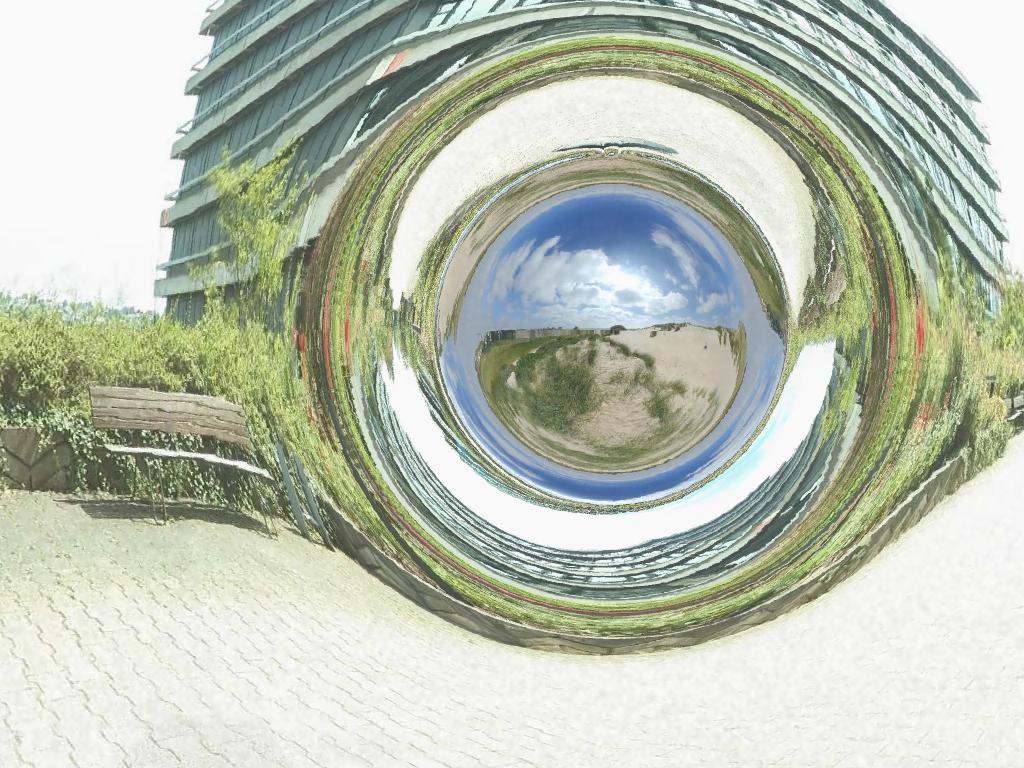
That might be great for the possibility of sending a single particle from one event in spacetime to another, which could allow that particle to leave spacetime at one location and moment and re-emerge at a different location and moment, including moments that may correspond to “earlier in time” than when the particle first exited spacetime. If we want to scale that up, however, to allow something like a human being through, that’s going to take some work. Every known particle and quantum in our Universe has always been shown to possess positive energy and either positive or zero mass; the negative energy and/or negative (or imaginary) mass solutions have not yet been discovered. Although, we should all note that it’s eminently possible to have negative mass/energy particles in the framework of general relativity; there’s nothing forbidding it.
If we want to create a physical wormhole for a human to potentially travel to, that’s our first order of business: to postulate that this negative mass/energy matter exists. While we know of black holes in the Universe, entities that were formed out of positive mass/energy, we’d have to postulate the existence of white holes as well: entities formed out of negative mass/energy. If we could go ahead and create both a supermassive black hole and the negative mass/energy counterpart to it (a supermassive white hole), we could then imagine connecting the two of them, which could result, finally, in what we’ve been seeking all along: a traversable wormhole.

Why is a traversable wormhole so important to the idea of time travel? Because once you’ve created the two “ends” of the wormhole, plus forged and maintained the connection between them, then no matter how far apart you subsequently take these two connected objects from one another, with sufficient mass/energy — of both the positive and negative kind — this instantaneous connection will eternally remain. All of that is great for instantaneous travel through space, and by leveraging the laws of special relativity together with this general relativistic phenomenon, we can extend it to traveling through time as well.
Whenever you travel close to the speed of light, you experience a phenomenon known as time dilation. Your motion through space and your motion through time are related by the speed of light: the greater your motion through space, the less your motion through time becomes. So now imagine that you have the TRAPPIST-1 system as your destination. It’s 40 light-years away, but if we could travel at incredibly high speeds — like speeds exceeding 99.9% the speed of light — we might be able to make a one-way journey in just six months of time for the traveler. From special relativity alone, if you:
- got into a spaceship,
- traveled very close to the speed of light toward that star,
- then stopped, turned around, and returned back to Earth at that same speed,
you’d find something odd. Due to time dilation and length contraction, you might reach your destination after six months, and then age another six months during the return journey. But back on Earth, a whopping 81 years would have passed. Everyone you’ve ever known would have aged tremendously, and it’s very likely that everyone you knew before leaving would be long gone. This is the standard way time travel physically works: it takes you into the future, with the amount of travel forward in time dependent only on your motion through space.
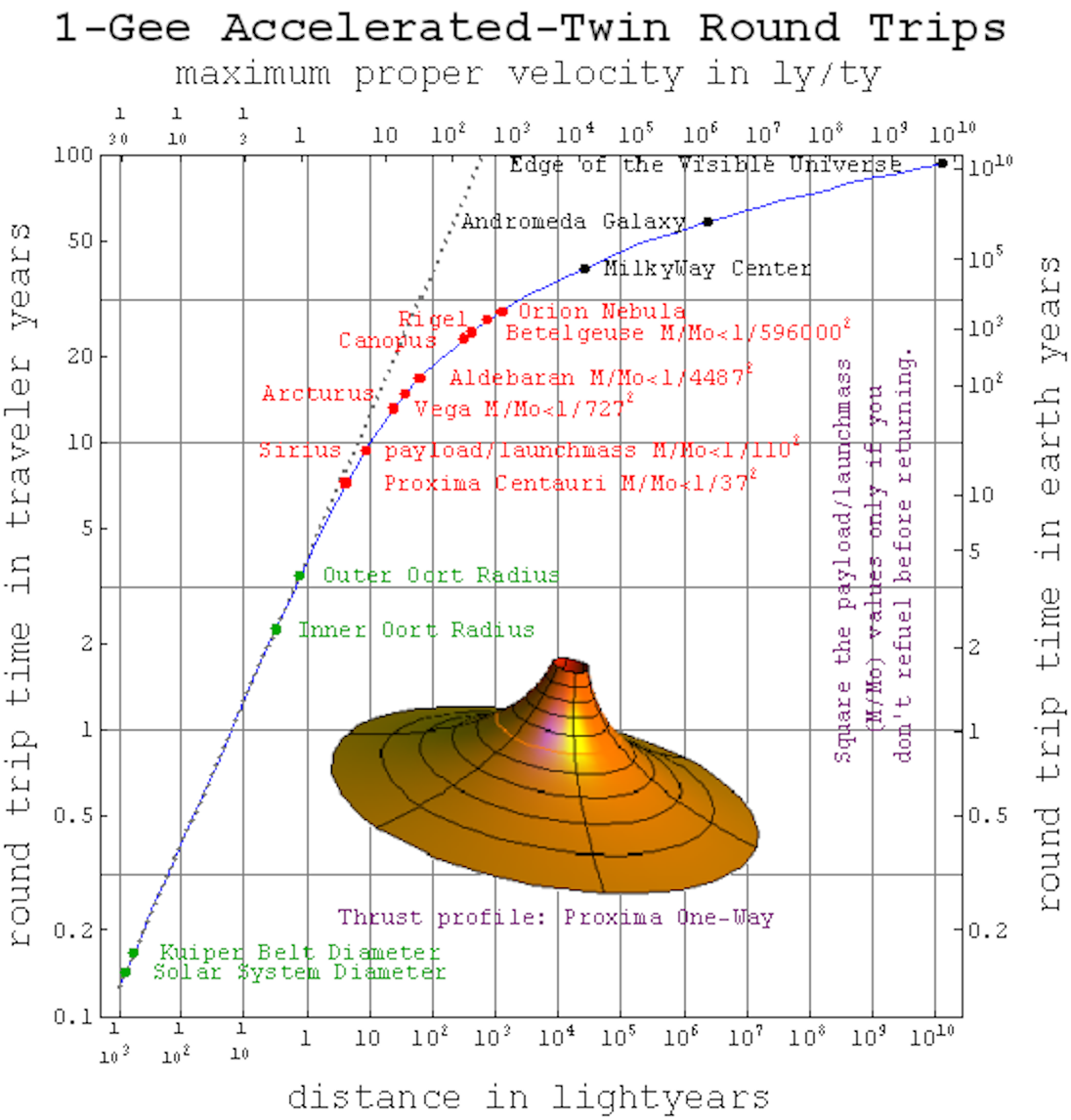
But if you were to construct a wormhole like we just described — with a supermassive black hole and a supermassive white hole connected by some type of bridge — the story changes in a profound way. We can imagine the same exact scenario as previously, where we leave Earth at close to the speed of light and travel to a destination that’s 40 light-years away, but in such a fashion that only ~six months of time pass for the people on board the spaceship. Only, this time, because we created a wormhole previously, we can imagine that we left one end of the wormhole close to motionless, such as remaining back near Earth, while the other one was taken along that relativistic journey, close to the speed of light.
Because those two ends of the wormhole remain linked across space and time, you have two options to get back home from 40 light-years away. You can travel back the long way: through space, just as before, at 99.9+% the speed of light. When you return, one year will have passed for you, but 81 years will have passed back on Earth. Or you can take the short-cut you went through all that effort to create: by entering the rapidly-moving end of the wormhole after it’s been moved at relativistic speeds for six months: to a distance of 40 light-years away. What happens when you enter that wormhole?
You’ll re-emerge back on Earth, sure, but it will be instantaneous. What’s most remarkable is that it won’t be 81 years from now when you return to Earth, and their calendars won’t say June 2105, nor will it be 40.5 years later, as their calendars won’t say December 2064. Instead, only six months would have passed, and even though you traveled 40 light-years away, it will only be December 2024 when you re-emerge at the other end of the wormhole, and find yourself back on Earth.
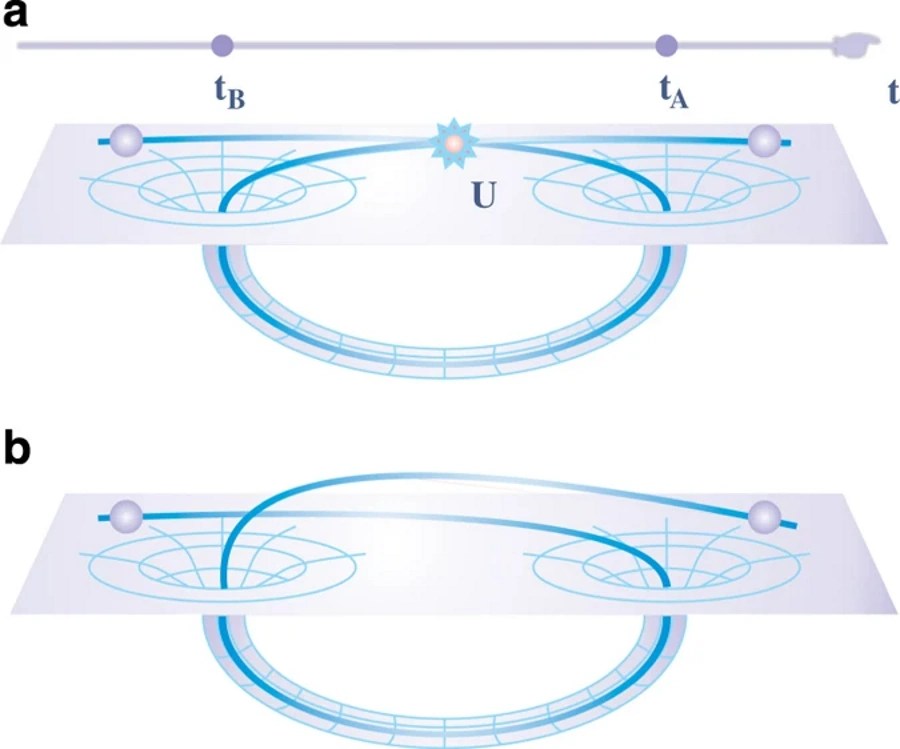
How is this possible? You have to remember that in relativity, time itself is relative. This teaches us something profound: that our notion of “a year” isn’t the same for everyone, particularly if they’re moving through time and space at different rates. If we consider a hypothetical journey from Earth to the TRAPPIST-1 system, while taking one end of this wormhole with us, we’d find that the “in motion” end of the wormhole would have only aged by the amount of time we spent on our journey: 6 months. Even though, back on Earth, 40.5 years have passed, the connection between the two ends of the wormhole is still instantaneous, and if you traveled back “the short way” through the wormhole instead of “the long way” through space, you’ll find that only six months have passed when you come out of the original end.
Now imagine that this wasn’t a scenario that we were going to set up today and devise an application for it in the future. No; instead, imagine that 40 years ago, back in June of 1984, someone had created such a pair of entangled wormholes and sent one end of the wormhole off on this journey already, and that you went with it. If you were able to step into one end of that wormhole today, in 2024, you’d wind up back in time at the mouth of the other end of the wormhole… back in December of 1984. The only restriction is that you yourself couldn’t have been sticking around and stationary, here on Earth, for the past 40 years. In order for this scenario to work, you needed to be with the other end of the wormhole, or traveling through space to catch up with it, for all of that time.

One of the remarkable aspects of this physically allowable form of time travel is this: we discover that this also forbids the grandfather paradox from occurring! Even if you imagine that this wormhole was created before your parents were conceived, and that all four of your grandparents were aboard the ship, and the ship traveled near the speed of light while your parents were conceived and then you were conceived, born, and grew up, there’s no way for you to return to the original, unmoving end of the wormhole at a moment prior to your grandparents boarding that ship. There’s no way to return to an early enough moment that you could prevent your grandfather from boarding that ship, or to prevent your own parents from conceiving you.
The closest you’d be able to get would be to have put your newborn father and mother on a ship, when they were very young, to catch the other end of the wormhole, have them live, age, conceive you, and then send yourself back through the wormhole. You’d be able to meet your grandfather back on Earth, perhaps when he was still quite young — perhaps even younger than you are now — but it will still, by necessity, occur after your parents were born, and so there would be no way to prevent your own existence. It’s fascinating and true that a great many unusual things become possible in the Universe if negative mass/energy is real, abundant, and controllable, and traveling backward in time might be, perhaps, the wildest consequence we’ve ever imagined. Within the framework of both special and general relativity, traveling back in time may be difficult to achieve in any practical sort of fashion, but there’s absolutely nothing forbidding it from occurring!



